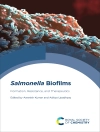Reports on the emergence and prevalence of resistant bacterial infections in hospitals and communities raise concerns that we may soon no longer be able to rely on antibiotics as a way to control infectious diseases. Effective medical care would require the constant introduction of novel antibiotics to keep up in the “arms race” with resistant pathogens.
This book closely examines the latest developments in the field of antibacterial research and development. It starts with an overview of the growing prevalence of resistant Gram-positive and Gram-negative pathogens, including their various resistance mechanisms, prevalence, risk factors and therapeutic options. The focus then shifts to a comprehensive description of all major chemical classes with antibacterial properties, their chemistry, mode of action, and the generation of analogs; information that provides the basis for the design of improved molecules to defeat microbial infections and combat the emerging resistances. In closing, recently developed compounds already in clinical use, those in preclinical or first clinical studies, and a number of promising targets to be exploited in the discovery stage are discussed.
Inhaltsverzeichnis
Part I Current trends in antibiotics, pathogens and medical needs.- Part II Families of novel candidates and conventional antibiotics.












